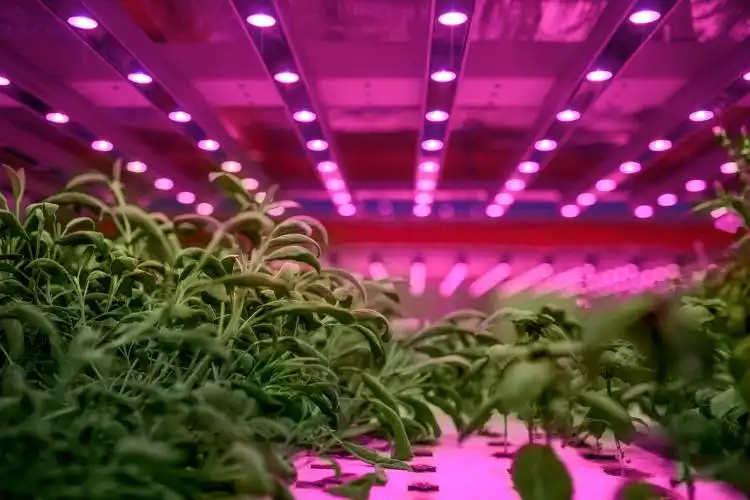Start a Fish Farm
Riding the Wave of Profitable Aquaculture: Your Own Fish Farming Business Adventure
| Updated


FISH FARM
Dive into the world of aquaculture by starting your very own fish farm! This intriguing business involves raising fish commercially in tanks or enclosures, usually for food. Think of it as farming the seas and streams, but from the comfort of your land. It's a fantastic journey promising both new insights and challenges. Imagine, from spawn to table, you could be the master of the whole process, satisfying seafood lovers while raking in some splendid profits!
Jump to Business Plan
RELATED BUSINESS IDEAS
Browse ALL Sustainability & Eco-Friendly Initiatives Business Ideas
Discover Your Perfect Domain
Unlock the door to your online success with our hand-picked selection of premium domain names. Whether you're starting a new venture or rebranding an existing one, the right domain can set the tone for your digital presence. Browse through our curated list, each with its unique potential to enhance your brand's visibility and credibility.
FISH FARM MINI BUSINESS PLAN
This a quick reality check to help you identify the strengths and weaknesses of your business concept before you dive in.
Business Idea: Fish Farming
Expected Percent Margin:
- Gross Margin: 40-60%
- Net Profit Margin: 10-20%
Earnings Expectations:
- Daily Earnings: $100 - $300
- Weekly Earnings: $700 - $2,100
- Monthly Earnings: $3,000 - $9,000
- Annual Earnings: $36,000 - $108,000
Actions to Hit Those Numbers:
1. Raising Fish:
- Initial Investment: At least $10,000-$20,000 for buying fingerlings, fish food, tanks, and water filtration systems.
- Breeding Stock: Buy high-quality fish fingerlings or species.
2. Pond/Tank Management:
- Maintenance: Perform regular checks on water pH levels, temperature, and oxygen supply to maintain healthy fish.
- Protection: Set up structures such as nets to protect your fish from predators.
3. Feeding:
- Feeding: Feed the fish 2-3 times a day with nutritious fish feed to ensure rapid growth.
- Feed Stock: Reorder fish feed before they run out to avoid any disruptions.
4. Marketing:
- Direct Advertising: Reach out directly to shops, restaurants, and potential customers in your locality.
- Digital Presence: Create a website or social media page to reach a wider audience.
5. Sales:
- Price Setting: Pricing should be competitive but at the same time ensure that your costs are covered and you're making a profit.
- Negotiating Contracts: If possible, negotiate contracts with restaurants and local stores for recurring sales.
These are only estimated figures and can vary depending on many factors including the type of fish you're farming, your market, and more. Always consult with a financial advisor for personalized advice.
NOT WHAT YOU HAD IN MIND? Here are more ideas



Browse ALL Sustainability & Eco-Friendly Initiatives Business Ideas
Grab Your Business Website Name
Before you get caught up in the whirlwind of setting up your business, invest in a domain name. It's a small but significant step that lays the foundation for your brand and makes it easier for customers to find and trust you. Just like you wouldn't build a house without securing the land first, don't build a business without securing your domain name.
"Why? Can't that wait?" Here's why it shouldn't
Step 1: Determine if Starting a Fish Farm is Right for You
Breakdown of Start-Up Expenses
Before starting a fish farm, it is important to understand the costs associated with the business. Start-up expenses can include the cost of land, building materials, and equipment. Additionally, there may be licensing and permit fees, as well as the cost of fish and other supplies. It is important to research the costs associated with starting a fish farm in your area to ensure that you are prepared for the financial commitment.
Breakdown of Ongoing Expenses
In addition to start-up expenses, there are ongoing expenses associated with running a fish farm. These expenses can include the cost of feed, labor, and utilities. Additionally, there may be costs associated with maintenance and repairs of equipment, as well as the cost of any additional supplies. It is important to research the costs associated with running a fish farm in your area to ensure that you are prepared for the financial commitment.
Examples of Ways to Make Money
There are several ways to make money from a fish farm. One way is to sell the fish directly to customers. Additionally, the fish can be sold to local restaurants and markets. Other ways to make money include selling fish eggs, selling fish feed, and offering fish-related services such as fishing tours or fish-cleaning services. It is important to research the market in your area to determine the best way to make money from your fish farm.
Step 2: Name Your Fish Farm
Choosing a name for your fish farm is an important step in the process of starting your business. It should be something that reflects the type of business you are running and that is memorable to potential customers. You should also consider the domain name and social media handles that are available for your chosen name. Additionally, make sure that the name you choose is not already taken by another business. You can check with your local government to make sure that the name you choose is not already in use.
Register Your Business Name
Once you have chosen a name for your fish farm, you will need to register it with your local government. This will ensure that the name is legally yours and that no one else can use it. You will also need to register any trademarks or logos associated with your business name. This will help protect your business from potential legal issues in the future. Additionally, registering your business name will make it easier for customers to find you online.
Step 3: Obtain Necessary Licenses and Permits
The third step in starting a fish farm is to obtain the necessary licenses and permits. Depending on the country, state, and local laws, there may be a variety of licenses and permits that must be obtained before a fish farm can be established. It is important to research the local laws and regulations to ensure that all necessary licenses and permits are obtained.
In some cases, a business license may be required in order to operate a fish farm. Additionally, a permit may be required in order to discharge water from the fish farm into a body of water. It is important to research the local laws and regulations to ensure that all necessary licenses and permits are obtained.
In addition to local laws and regulations, it is important to research any federal laws and regulations that may apply to the fish farm. For example, the United States Fish and Wildlife Service may require a permit for certain species of fish. Additionally, the Environmental Protection Agency may require a permit for the discharge of water from the fish farm.
It is important to obtain all necessary licenses and permits before beginning the operation of a fish farm. Failure to obtain the necessary licenses and permits may result in fines or other penalties. Additionally, it is important to ensure that all licenses and permits are kept up to date.
Finally, it is important to research any additional licenses and permits that may be required by the local government. For example, some local governments may require a permit for the use of water from a local body of water. Additionally, some local governments may require a permit for the disposal of waste from the fish farm. It is important to research the local laws and regulations to ensure that all necessary licenses and permits are obtained.
Step 4: Acquire Land and Equipment
Once you have determined that starting a fish farm is the right endeavor for you, the next step is to acquire land and equipment. Depending on the size of the farm you are looking to start, you may need to purchase or lease land. It is important to consider the location of the land and the type of soil, as this will affect the type of fish you can raise. Additionally, you will need to purchase or lease the necessary equipment for the farm, such as tanks, pumps, aerators, and other necessary items. If you are looking to raise a specific type of fish, you may need to purchase specialized equipment. It is important to research the type of equipment you need and shop around for the best prices. You may also want to consider purchasing used equipment to save money. Once you have acquired the land and equipment, you will need to set up the tanks and other equipment in the proper way. This may require the help of a professional, so be sure to factor in the cost of hiring someone to help you set up the farm.
Step 5: Stock Your Fish Farm
Once the infrastructure of your fish farm is complete, it is time to stock it with fish. Depending on the type of fish you plan to raise, you may need to acquire fingerlings or young fish. You will also need to purchase feed for the fish. It is important to research the type of fish you plan to raise to ensure that you are providing them with the right type of feed and environment. You should also research the best sources for fingerlings and feed. Additionally, you should consider the cost of these items and the amount of space needed to store them. Finally, you should also research any local regulations that may apply to stocking your fish farm.
Step 6: Develop a Feeding and Maintenance Schedule
Developing a feeding and maintenance schedule is essential for the success of a fish farm. A feeding schedule should be established to ensure that the fish are getting the proper nutrition and that the food is being distributed evenly. Additionally, a maintenance schedule should be created to ensure that the tanks and equipment are being properly cleaned and maintained. This will help to keep the water clean and reduce the risk of disease.
When creating a feeding schedule, it is important to consider the type of fish being raised and their nutritional needs. For example, some fish may require more frequent feedings, while others may require less. Additionally, the amount of food given should be adjusted to the size of the fish and the number of fish in the tank. It is also important to consider the type of food being used, as some foods may be more nutritious than others.
When creating a maintenance schedule, it is important to consider the type of equipment being used and the size of the tanks. For example, larger tanks may require more frequent cleaning and maintenance. Additionally, the type of filter being used should be taken into consideration, as some filters may require more frequent cleaning than others. It is also important to consider the type of fish being raised, as some fish may require more frequent water changes than others.
Finally, it is important to keep track of the schedule and make adjustments as needed. This will help to ensure that the fish are getting the proper nutrition and that the tanks and equipment are being properly maintained. Additionally, it will help to reduce the risk of disease and keep the fish healthy.
Step 7: Market Your Fish Farm
Marketing your fish farm is a crucial step in the process of starting a successful business. You need to make sure that potential customers know about your business and the services you offer. There are a variety of ways to market your fish farm, including creating a website, advertising in local newspapers and magazines, attending trade shows, and networking with other businesses in the industry. Additionally, you can use social media platforms such as Facebook, Twitter, and Instagram to reach a larger audience. Make sure to include information about your business, such as the types of fish you offer, the services you provide, and any special offers or discounts. You can also use these platforms to engage with customers and answer any questions they may have. Additionally, you can create a blog to share your knowledge and expertise with potential customers. This will help to establish your business as a reliable source of information and can help to drive more traffic to your website. Finally, you can also create promotional materials, such as flyers and brochures, to distribute to potential customers.
Step 8: Monitor Your Fish Farm
Monitoring your fish farm is an important part of running a successful business. You should keep track of the water quality, feed, and other supplies. You should also monitor the health of your fish and any changes in their behavior. Additionally, you should keep track of the amount of fish you have in your tank and the number of eggs that are laid. This will help you determine the success of your fish farm and make adjustments as needed.
You should also keep track of the amount of money you are making and the expenses you are incurring. This will help you determine if you are making a profit or if you need to make changes to your business model. Additionally, you should keep track of the market trends and adjust your pricing accordingly. Finally, you should keep track of the regulations and laws in your area and make sure you are in compliance. This will help you avoid any legal issues and keep your business running smoothly.
Step 9: Expand Your Fish Farm
Expanding your fish farm is the final step in the process of starting a fish farm. This step is important because it allows you to increase your production and profits. There are a few ways to expand your fish farm, depending on the size and type of fish you are raising.
One way to expand your fish farm is to increase the size of your tanks. This will allow you to raise more fish and increase your profits. You can also add additional tanks to your existing setup, which will also increase your production. Additionally, you can add more equipment to your tanks, such as aerators, filters, and pumps, to improve the quality of the water and the health of your fish.
Another way to expand your fish farm is to diversify the types of fish you are raising. This will allow you to appeal to a wider range of customers and increase your profits. You can also add additional services, such as fish delivery, to your business. This will allow you to reach more customers and increase your profits.
Finally, you can also expand your fish farm by adding additional staff. This will allow you to increase your production and provide better customer service. You can also hire additional staff to help with marketing and advertising, which will help you reach more customers and increase your profits.
Expanding your fish farm is an important step in the process of starting a fish farm. By increasing the size of your tanks, diversifying the types of fish you are raising, and adding additional staff, you can increase your production and profits.
EXPLORE MORE CATEGORIES
Browse ALL Business Idea Categories
TAKE THE NEXT STEPS









